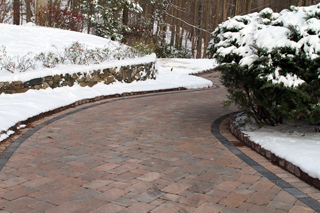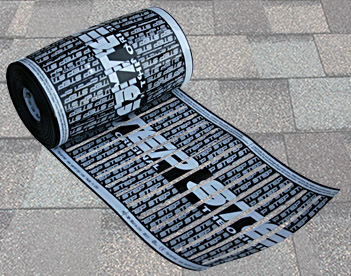How Much will it Cost to Operate a Radiant Heat System?
A common question among homeowners looking to install radiant heat is “How much will it cost to run the system?” Of course, each snow melting or floor heating system is unique, and local utility rates vary throughout the country. However, there is a formula that can be used to give potential buyers a good idea of what the operating cost of their snow melting system will be.
Each ProLine Radiant snowmelt system is custom designed. To ensure optimum performance, each radiant heat system is designed specifically for the conditions of the area in which it is being installed. Everything from the altitude and average snowfall is considered as well as average winter temperatures. The experts at ProLine understand that a radiant heating system is only as good as its installation, which is why ProLine commits so much of its expertise to professional system design, as well as installation support and training. When it comes to complete service, you won’t find a more reliable provider than ProLine Radiant.

To calculate the operating cost of your snow melting system, you’ll first need to obtain the kilowatt-per-hour rate from your local power utility company. These rates vary from region to region, so the rate shown here in the following formula uses the national average kilowatt per hour rate (12 cents) for the formula below.
- Determine the total square footage of the area to be heated. (The average American home has an 800-square-foot driveway.)
- Multiply the square footage by the heat required (37 watts per square foot for residential). This will give you a total for the watts per square footage required.
- Divide this number by 1,000 to convert to kilowatts.
Example (for heating an 800-square-foot driveway): 800 (square feet) x 37 (watts) = 29,600 (total watts).
29,600 divided by 1,000 = 29.6 kw per hour (This is what the power company will charge per one hour of operation.) The average utility rate is 12 cents, therefore: 29.6 x .12 = 3.55. The cost of operation would be $3.55 per hour.
ProLine Radiant’s professional designers configure your snow melting system to best meet your snowmelt needs in the most efficient manner possible. ProLine’s snow melting heat cable is a longtime, proven industry leader that has been installed in commercial and residential applications throughout Northern America. The heat cable is available on spools or pre-spaced in mats (with strips of tape backing) that can be rolled out on site, providing quick and easy “roll-out” installation.
While systems vary, residential snow melting systems typically operate at 37 watts per square foot while commercial snow melting systems operate at 50 watts per square foot. The formula shown here would therefore change accordingly and you would multiply the square footage by 50.
ProLine’s radiant design team provides AutoCAD drawings of each system that includes all the power requirements and technical specs. Customers will know all the information you need prior to any installation taking place, including load calculations, number of breakers, breaker sizes, and so on. ProLine is committed to your success.
Contact a ProLine representative today to learn more about your radiant heating options (866.676.9276).
Troubleshooting Tips for Roofing Installers
Tips for Troubleshooting ProLine Low-voltage Roof Heating Systems
ProLine Radiant’s low-voltage, roof deicing system has proven to be one of the most effective roof heating systems available. This efficient system is ideal for heating roof edges and valleys, as well as gutters and downspouts.
The thin, semi-conductive polymer heating element is self-regulating and can be discreetly secured under metal, shingles or other roofing surface. The flexible heating element can also be nailed or stapled through, further making installation quick and easy, and is polypropylene fused during fabrication to achieve water proofing and protection from alkaline or salt damage.

If your system is not powering up as it should after installation, try these simple steps to diagnose the problem.
Remove outer casing of the power pack.
Is the system getting power? (Measure the voltage on the supply side of the power pack.)
Is your snow controller or activation device triggered? (Do you have contact closure across the trigger and 24-volt terminals at the top of the regulator board? This will provide the contact closure for the trigger and 24-volt terminals mentioned above.)
With the casing of the power pack removed, verify that you have power reaching each run of the RoofHeat material:
- Check each output’s indicator LED (should be lit when triggered and off when not).
- Clamp on the amp probe to one output lead at a time to verify that there is current in each output load. (The amount of power will be determined by the length of the heating material in the circuits and the ambient temperature.) At 70°F the current should be approximately 18.5 amps for a 30-foot run of material.
In addition to designing radiant heat systems, ProLine also provides installation support and free installation training. Contact a ProLine representative today to learn more, at 866.676.9276.
